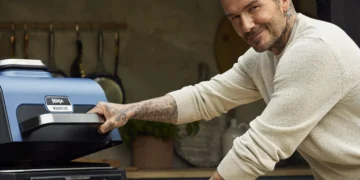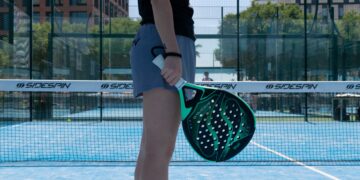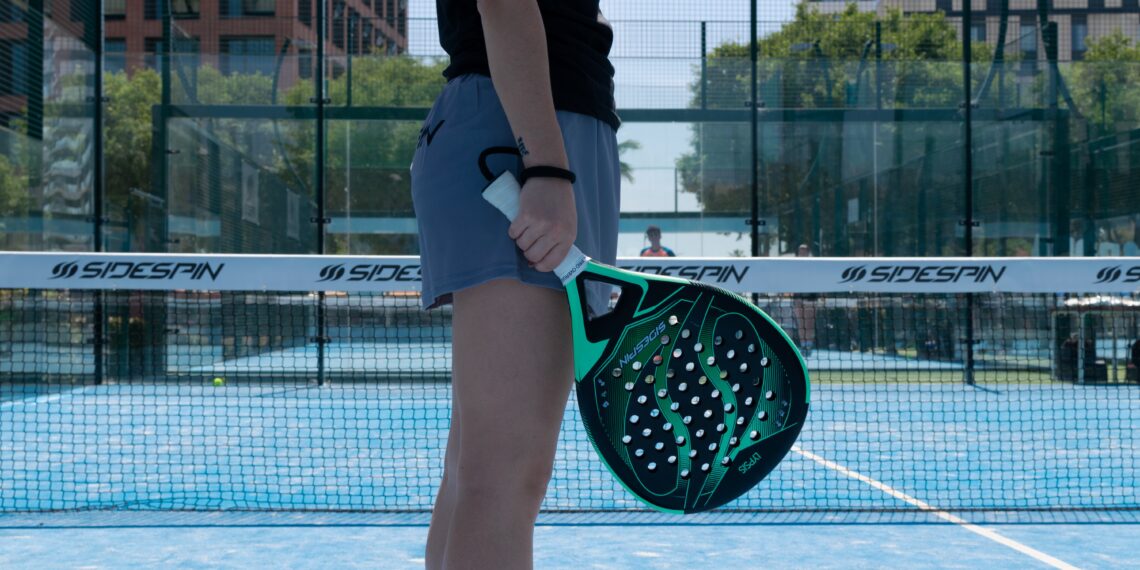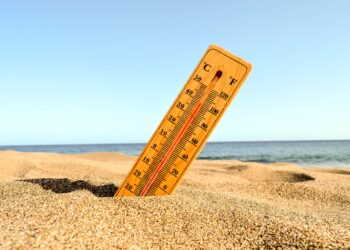Forget dusty racket shelves and predictable backhands. Padel tennis, a lovechild of squash and tennis, is exploding onto courts worldwide, its fascinating blend of adrenaline, strategy, and good times capturing interests (and forehands) of all ages. This Mexican-sourced outdoor occupation, hatched in the 1960s, shrinks a tennis court down to a glass-walled cage, letting you pummel the ball off those shiny barriers. Imagine the thrill of a tennis volley, amplified by the tactical ricochets of a squash match – that’s padel tennis in a nutshell.
Padel: From Sun-Kissed Birthplace to Global Court Craze
And here’s how padel first came to be….
Picture this: Acapulco 1969, sun-drenched palms swaying, and Enrique Corcuera, a racketeering enthusiast extraordinaire, itching for a new volley. Tennis? Too predictable. Squash? Too claustrophobic. So, Corcuera does what any visionary does – he throws a dash of squash on his tennis court, adds a pinch of paddle-tennis spice, and voilà! Padel, a hybrid sport, is born.
Early padel was rough around the edges, concrete walls dividing spectator and participants and in turn, the sport itself. But the game’s essence – those lightning-fast rallies, the wall-bouncing wizardry – captivated Corcuera’s crew, setting the stage for a global court domination.
Fast forward to 1974, and across the Atlantic, Prince Alfonso of Hohenlohe-Langenburg gets bitten by the padel bug. Smitten by its Acapulco magic, he whisks the sport to Spain, planting its seeds at his swanky Marbella Club. The Spanish, with their newfound racquet-wielding passion, embrace padel like a long-lost childhood favourite. National federations sprout, tournaments sizzle, and by the late 90s, padel’s got pros, prizes, and the whole shebang.
But padel’s not content with just Spain’s sun-kissed shores. The 21st century sees it erupting to global enthusiasm, spewing courts across continents. From Argentinian barrios to Dubai’s desert sands, padel courts pop up as fast as you can say mushrooms after the rain. Celebs hop on the bandwagon, Instagram explodes with smashes and lobs, and padel becomes the hottest ticket on the sporting scene.
If you’re into exciting games, here’s a different type of game that might pique your interest. The Squid Game Reality show brings both the fictional and real together. To enter the reality show, find out about it: Casting – The Squid Game.
Padel Tennis Health Benefits
With a ton of sports to choose from for health benefits, padel tennis comes up somewhere on top. It’s beneficial not just physically but mentally as well considering its social aspect. Like tennis, padel tennis also involves a doubles version. As a racket sport, it provides a few benefits with some of them listed below:
Accessible to All
Padel tennis does not discriminate. As a group and racket sport, its intensity can be adjusted to players’ abilities and comfort level. Being as flexible a sport as it is also means an easier time pairing up with a preferred partner.
Easy Stress Buster
A game that’s easily played daily which requires constant hand eye coordination is the perfect balm to the stress of the daily grind. Fun but needing just the right amount of focus, padel tennis suits anyone that’s looking for a convenient sport (easy enough to play with a friend) to take on daily. Due to how easy it is to pick up yet challenging enough to break out a sweat, padel is valued for being a fun and moderately challenging sport to help ease stress.
Encourages Muscle Flexibility
Much like tennis, padel tennis involves varied body movements. The quicker and more agile the reflexes, the better the player’s performance. This may be a sport with a relatively low entry barrier but the learning curve promises a challenging yet fulfilling experience. A player gets stronger one play at a time, so this is a sport that’s quite the opposite of demotivating. A good choice for anyone thinking of getting a new lease on life with an active lifestyle.
Bat Away, Rain or Shine
This is a sport accessible indoors and outdoors. It can be played on an indoor or outdoor court. This flexibility is uplifting considering anytime you feel like a competitive match of Padel Tennis Racket, you can go for it, no matter the weather. With less reasons to say no means getting fitter faster and achieving wellness goals easier.
Helps with Muscle Composition
Padel tennis really helps with toning the muscle. If you’ve ever done squats and lunges in a bid to get a perkier derrière of your choice, padel tennis might just be for you. Even better, it’s a more fun exercise as you’re in the midst of ‘playing’ while getting those glutes to work.
A Fun Cardiovascular Activity
Within the timeframe of one padel match, you would have improved your heart rate, peripheral system and endurance. One match equals 45 minutes, so you can imagine how running back and forth, all over the court would have beneficial side effects on your cardio health. The best thing about this is that as long as you are consistent with your padelling, your cardio health can only get better over time.
Better Mental State: Focus on Goals
With Padel Tennis comes goal setting and achieving goals. Things like better service, more stamina and being tournament ready all require mental focus and discipline. It’s more than just getting more batting and court hours as it involves accomplishing short, medium and long-term goals. This level of commitment, moulds you into a motivated, committed and focused team player. And before you know it, not only do these traits make you a better padel player but a better individual overall.
Just One of the Team
A team sport allows coordinating your personal game and style with others’. The synchronicity, compromise and negotiation of play mean having to form connections with your teammates. Soon, the pairing up and playing against will help you get to know a certain player. What better way to help with your social making and collaboration abilities?
Why the craze? It’s simple, really. Padel’s the sport that welcomes everyone, from weekend social padel tennis players to serious athletes. It’s the social butterfly of racquet sports, fostering laughter and teamwork (and maybe the occasional playful jab at your partner’s questionable shot selection). It’s the strategic mastermind of the court, rewarding those who can weave a web of angles and drop shots that would make a spider jealous.
So, the next time you step onto a padel court, remember, you’re not just hitting a ball. You’re part of a legacy, a sun-drenched story from Acapulco to Argentina, Spain to Singapore. You could be a volley virtuoso and a padel fledgling and still be fully invested in the sport. Grab your paddle, embrace the ricochets, and join the recently revived padel revolution.
Padel Tennis Playbook: The Lowdown on Glass-Walled Competitiveness
Picture a court fit for the most competitive and athletic. It is 20 meters long and 10 wide and surrounded by hardy glass walls. Your weapon? Not a flimsy racket, but a solid-faced paddle, ready to unleash controlled chaos on a slightly softer tennis ball. Points are scored like tennis, but here’s the twist: one bounce on the ground to start your padel tennis racket tricks. Use those glass barriers to weave a web of trick shots and impossible angles. Win six games by two, and you’ve conquered the court.
As you can see, padel is slightly different from tennis. With padel you’re allowed more tricks with your ball: the occasional bounce on the floor and walls. I supposed by now you’re wondering whether padel is more like tennis or squash. Well, it is its own sport altogether and this section explains why and how.
Padel Tennis Manoueverings: A Rulebook for a Match within Walls
Padel’s not just a sport; it’s a riot of volleys, a collection of smashes, a chaotic ballet where walls are your allies and the net’s your nemesis. Before going all out on padel, though, take time to understand the rules – the key to getting comfortable on the court.
The Court: Your Arena of Glass and Grit
Imagine a tennis court shrunk down, occupied by adrenaline pumped contenders, surrounded by claustrophobia inducing glass walls and imposing limitations. That’s your arena, where you wield solid-faced paddles in hand. Doubles matches are more fun in this setup. Once familiar with the game, you realise padel is all about teamwork where laughter, and maybe a cheeky jab at your partner’s questionable shot selection make it one of the most sociable sport.
Scoring System: Six Games to Glory
Scoring a point is more interesting. For instance, hit the ball over the net, let it bounce once (walls are your secret allies, remember?), and watch your opponent scramble. Rack up six games, two more than your rivals on the other side, and the court is yours. Just like tennis, but with way more wall plays and strategic ricochets.
Serve Secrets: Engaging the Underarm Advantage
Underarm, my friend, underarm. That’s the name of the serve game. Bounce the ball once in your box, then unleash it diagonally into your opponent’s territory. You get two chances at this, but mess up both, and your opponent dances away with a point.
Wall Play Prowess: Your Playground of Possibilities
Forget those tennis one-bounce rules. Padel lets the ball hit your side of the court once before the walls become your accomplices. Smash the balls, strategically hit them, or lob them over your opponent’s head. Learn to use the walls and use those glass barriers to your advantage, then watch your shots improve as you familiarise yourself with the court.
Gameplay Nuances: The Devil’s in the Details
Make sure to watch court lines closely. It can be tricky to see where the balls lands with the service line on your serve, but a direct touch means you’re out. Same goes for the sidelines – a post-bounce landing is fine, but a direct hit gives your opponent a win. And remember, one bounce is all you get before it hits the wall. Mess up the double bounce tango, and the point pirouettes away to your opponent.
Serve Strategies: Repurposed Ballistics
Padel tennis is as much a strategies came as it is racket sport. Mastering several serve types always helps to win over opponent. Use the flat serve or launch a high serve, forcing your opponent to run the length of the court instead of making it easy for them taking a serve from a small area of the court. And when you’ve truly mastered the art of padel, there’s the “bandeja” – a controlled smash that many players use to end the game with a victorious finish.
The Mental Game: Trumping the Court Within
Padel’s a rollercoaster of emotions – a triumphant smash followed by a net cord that ends in a devastating loss. Learn to ride the lows and highs, stay calm under pressure, before celebrating the wins. Remember, padel’s about fun, camaraderie, and the sheer joy of mastering the rush of the sport
Bonus Tip: Don’t be intimidated by the rules and it’s fast-paced nature. Padel’s surprisingly welcoming, open to players of all ages and skill levels. Grab your paddle, step onto the court, and embrace the chaos. Experiment, have fun, and let the wall whispers guide you. Who knows, you might just become the next padel phenom, leaving your opponents speechless and the scoreboard singing your praises.
Why Padel Tennis Reigns: Thrills for All
This sport’s meteoric rise has more layers than a pro’s backhand. Newbies can pick it up faster than a dropped bandeja (that’s a controlled smash, if you’re new here), thanks to the smaller court and simpler rules. Plus, the constant volleys and frantic rallies keep the energy buzzing, while the doubles format forces teamwork and laughter (and maybe a few friendly volleys at your partner’s head). Don’t worry about age or fitness – padel’s gentle on the body, welcoming players of all stripes to join the glass-walled fiesta.
The Single-handed Backhand is one of the most basic but most powerful padel move. There’s a lot of information out there showing you how to use a padel tennis racket via this winning stroke, but this video is one I really like. It’s straightforward and explains everything concisely and efficiently — minus the frills.
Check it out below:
Beyond the Basics: Mastering the Padel Matrix
Once you’ve caught the padel bug, the rabbit hole dives deep. Wall play becomes your playground, a maze of angles, lobs, and defensive wizardry. Hone your volleys, smashes, and drives until they become second nature, and master the bandeja, a controlled smash that’ll have your opponents upping their game. Paddle shapes (round, teardrop, diamond) and materials (carbon fiber, anyone?) become your new vocabulary, as you craft the perfect weapon for your style. And for the doubles aficionados, formations, serve strategies, and mental game tactics become your secret sauce, taking your padel game to the next level.
Deconstructing the Padel Maze: Tackling the Glass-Walled Stage
Forget your textbook padel – beneath the sun-drenched rallies and infectious laughter, lies a hidden dimension, a tactical puzzle solveable only with true grit and skill. For those who seek mere play and aspire a top-level padel exchange, mastering the curve balls of the game is your key. So, grip your paddle, sharpen your focus, and prepare to tackle the uncertainties of the game.
Limitations of the Walls: Your Potential Allies
Walls aren’t mere plexiglass barriers; they’re your covert accomplices. Leveraging the court’s angles are also beneficial to your game. Master the lob’s gentle arc, a smooth arc over your opponent’s head, forcing them to scramble while you claim the net for the win. Weave the víbora’s cunning kiss, a diagonal graze against the glass, instantly tricking your adversary. Unleash the bandeja’s controlled fury, a controlled smash off the wall, which almost always finishes off the rival. Remember, the walls amplify your every stroke, transforming defense into audacious offense in a heartbeat.
Formation: A Chess Match on the Court
Rigid formations? Do away with them. Padel thrives on quicksilver moves and fluidity. Experiment with your opponent’s reactions and reflexes with both of you at the net negotiating with the volleys and smashes echoing through the court. At the same time, keep your partner close in periphery vision. Remember, communication is vital to making any duo work. Be your partner’s eyes and ears, anticipating their moves, adjusting your formation like a well-oiled machine.
The Serve Edge: Purpose of Different Serves
The padel serve is no mere formality; it’s your chance to get a head start, setting up your opponent’s mindset. Unleash the flat serve’s low-flying bullet, skimming the ground, challenging your opponent’s reflexes and anticipation. Master the high serve’s towering obelisk, forcing your opponents to scramble back, their court now yours. And for the true padel winner, there’s the elusive chiquita, a feather-light drop just over the net, leaving your opponent struggling to anticipate the move. Remember, variety is key. Keep others guessing, mixing your serves like a seasoned padeller, each move meant to disorient and dominate.
Padel vs. Pickleball: Cousins, Not Twins
Don’t confuse padel’s glass walls with pickleball’s slower, laidback pace. Sure, they’re both paddle-wielding cousins, but the differences are key. Padel courts are slightly larger, their walls constantly imposing, while pickleball sticks to open-air arenas. Padel paddles are solid, while pickleballers prefer their paddles perforated. And forget the no-volley zone near the net in padel – here, volleys reign supreme anywhere on the court. Doubles is padel’s bread and butter, while pickleball offers both solo and tag-team thrills. Ultimately, it’s a matter of choice. So why not dive into both and discover your perfect racquet sport?
Here’s a quick (4 minutes) read on Padel vs. Pickleball: How is Padel different from Pickleball.
Padel vs Pickleball: A Clash of Courts – Two Paddles, One Winner (Maybe)?
The sun, the sweat, the satisfying smack of a ball flying across the net. What’s not to like about this sport? But with two new sports vying for our attention, padel and pickleball, choosing your court favourite can be a pickle. In this section, we explore the differences between these paddle powerhouses, helping you pick the perfect fit for your next court conquest.
Court Types: Size Matters (a bit)
Imagine a tennis court shrunk by a third, that’s padel’s domain. Picture it adorned with glass walls, adding a twisty spin to every shot. Pickleball, however, thrives on badminton courts, a miniature version where lines blur between singles and doubles.
Ballistics Padel Play: About the Bounce
Both sports uses a bouncy yellow ball, but their game styles differ. Padel’s ball, similar to the tennis ball, tends to bounce once before hitting the wall. Pickleball’s perforated plastic ball is lighter and bouncier so tends to make a double-bounce before settling down.
Getting familiar with how the light or heavy a ball is makes it easier to manage with the swinging and batting. For a beginner of both sports, knowing your ball is a good starting point for learning both sports.
Controlling Volleys: Net vs. Baseline
At the net, volleys reign supreme. Padel players become net aficionados, rackets moving with lightning-fast exchanges, every touch a testament to reflexes and precision. Pickleball, however, encourages baseline challenges, volleys played close to the baseline for smashes and strategic lobs, making for a more grounded, tactical game.
Padel and Pickleball: A Game for All?
Both sports welcome players of all ages and skill levels. Padel’s larger court and faster pace might favour younger, athletic players, while pickleball’s smaller court and slower play can be kinder to beginners and those more suitable to a less energetic sport. Ultimately, the best game is the one that speaks to you and gets you moving.
Choosing between padel and pickleball isn’t about the best sport of them all, but finding the court that resonates with your game style. Whether you crave the whirlwind volleys of padel or the baseline play of pickleball, step onto the court, grab your paddle, and get into the game.
The Padel Tennis Revolution: More Than Just a Sport
Padel is more than just a game; it comes with a vibrant community, is a gateway to fun and sweat, and a testament to team spirit. So, find a partner, and step into the padel arena. Who knows you could just win a pedal tennis medal or tournament or two, making you a champion in your own way.





























